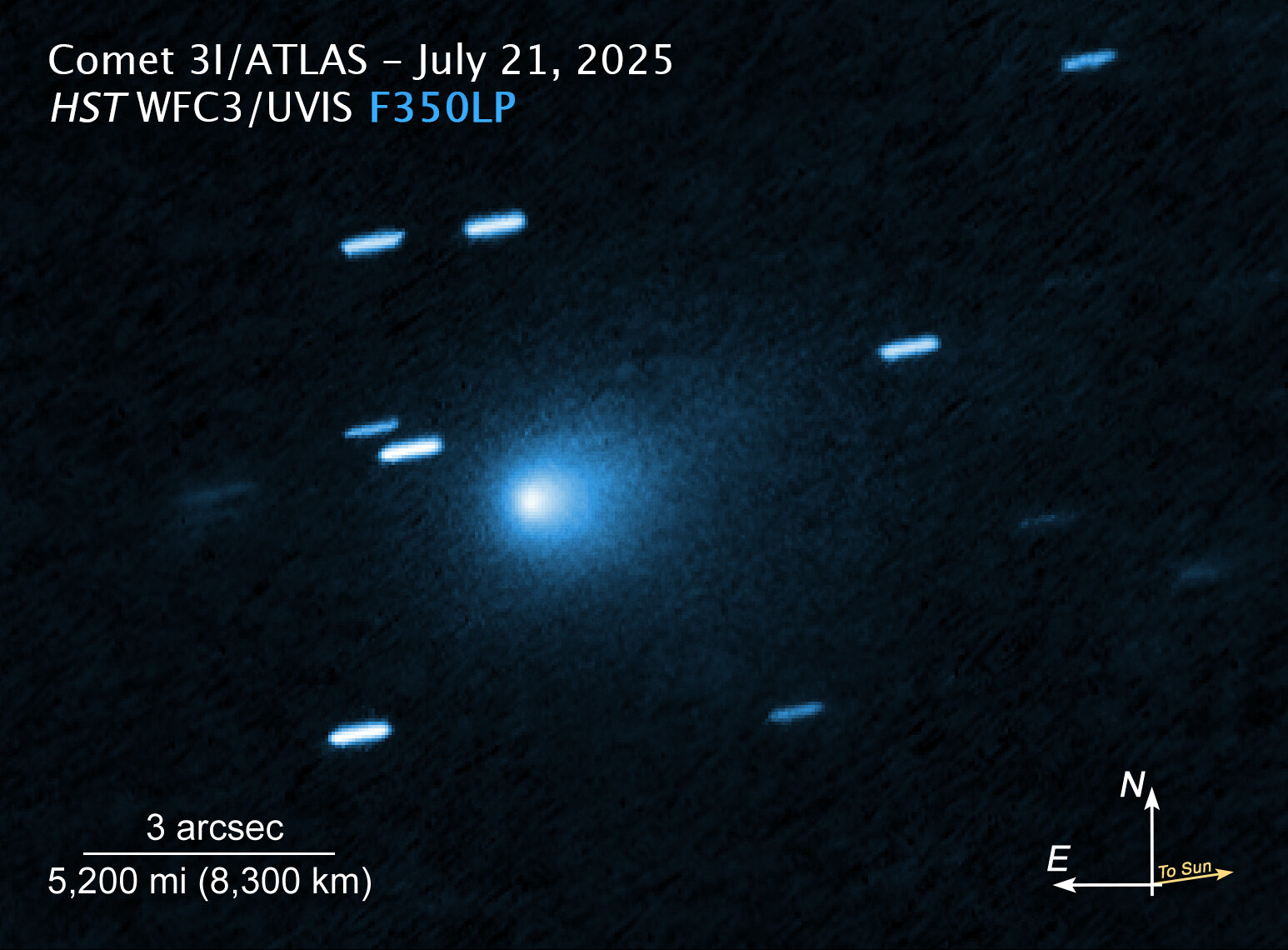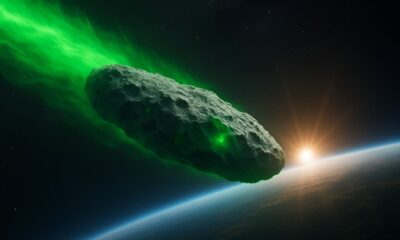Science
Asteroid 3I/ATLAS Sparks Global Debate on Possible Alien Tech

A newly discovered celestial object, designated 3I/ATLAS, has ignited intense discussions about the possibility of alien technology. The object, approximately 21 kilometers (nearly 13 miles) wide, was first detected in March 2023 by the ATLAS survey in Hawaii. Its unusual composition has raised alarm among scientists, who are now questioning whether this cosmic visitor might be evidence of extraterrestrial engineering.
Researchers have found that 3I/ATLAS emits metallic vapour primarily composed of nickel and chromium. These metals are typically used in high-temperature industrial alloys, yet they have never been observed in naturally occurring cosmic entities. Harvard astrophysicist Dr. Avi Loeb, who has previously explored interstellar phenomena, described the discovery as “unprecedented.” According to an interview cited by the New York Post, Loeb emphasized that the spectral signature of the material “does not match any natural asteroid or comet we’ve catalogued.” He further speculated that if the alloy were manufactured, it could indicate an artificial origin, potentially hinting at a probe or fragment of alien technology.
The analysis of spectroscopic readings from observatories in Chile and Spain has revealed emissions consistent with Inconel-type alloys, which are employed in spacecraft and jet engines on Earth. This finding is peculiar for several reasons. Nickel-chromium alloys typically require extremely high melting points, conditions that are rarely found outside complex industrial processes. Additionally, 3I/ATLAS exhibits non-gravitational motion, suggesting some form of propulsion or unusual outgassing. The object’s surface reflectivity appears unnaturally high, consistent with polished metals.
Dr. Laura Benton from the European Southern Observatory commented that, while no one is declaring it to be “alien hardware,” the data indeed challenges existing assumptions about what is naturally possible in the interstellar medium. As news of the discovery spread, social media platforms experienced a surge of speculation, with hashtags like #AlienAlloy and #AtlasProbe trending as users debated whether Earth had encountered its first extraterrestrial artefact.
Conspiracy theories have emerged, suggesting that government agencies may already be monitoring 3I/ATLAS for potential retrieval. However, NASA has downplayed these claims, stating in a press release that the object poses “no immediate threat” to Earth and is expected to exit the Solar System by 2026.
Despite the fervour surrounding the discovery, scientists are proceeding with caution. Loeb’s research group at Harvard’s Galileo Project is utilizing high-resolution telescopes to track the trajectory of 3I/ATLAS and to conduct further analysis of its emissions. Additionally, international space agencies are considering a joint observation campaign to capture clearer imagery of the object as it approaches perihelion later this year.
Dr. Benton noted, “Even if this turns out to be a natural phenomenon, it will expand our understanding of how metals form and survive in interstellar environments.” Whether 3I/ATLAS represents a relic of alien engineering or a unique cosmic occurrence, its arrival has captivated both scientists and the public alike. For now, this metallic visitor continues its silent journey through our Solar System, serving as a shimmering question mark in the vast darkness of space.
-

 Entertainment2 months ago
Entertainment2 months agoAnn Ming Reflects on ITV’s ‘I Fought the Law’ Drama
-

 Entertainment3 months ago
Entertainment3 months agoKate Garraway Sells £2 Million Home Amid Financial Struggles
-

 Entertainment2 months ago
Entertainment2 months agoCoronation Street’s Carl Webster Faces Trouble with New Affairs
-

 Health1 month ago
Health1 month agoKatie Price Faces New Health Concerns After Cancer Symptoms Resurface
-

 Entertainment1 month ago
Entertainment1 month agoWhere is Tinder Swindler Simon Leviev? Latest Updates Revealed
-

 Entertainment3 months ago
Entertainment3 months agoKim Cattrall Posts Cryptic Message After HBO’s Sequel Cancellation
-

 Entertainment2 months ago
Entertainment2 months agoMasterChef Faces Turmoil as Tom Kerridge Withdraws from Hosting Role
-

 Entertainment3 months ago
Entertainment3 months agoSpeculation Surrounds Home and Away as Cast Departures Mount
-

 World1 month ago
World1 month agoCole Palmer’s Mysterious Message to Kobbie Mainoo Sparks Speculation
-

 Entertainment2 months ago
Entertainment2 months agoITV’s I Fought the Law: Unraveling the True Story Behind the Drama
-

 Entertainment1 month ago
Entertainment1 month agoCaz Crowned Winner of The Great British Sewing Bee, Overjoyed by Triumph
-

 Entertainment3 months ago
Entertainment3 months agoMarkiplier Addresses AI Controversy During Livestream Response















